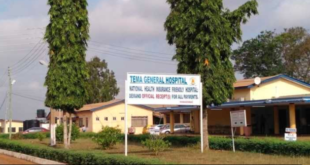Pre-exposure prophylaxis (PrEP) is an HIV prevention method. It is taken by people who are HIV negative, so that if they are unknowingly exposed to HIV, the drug will prevent the virus from infecting them.
The development of this method is important for South Africa because the country is the epicentre of the HIV pandemic. Around 7.5 million people in South Africa live with HIV – about a fifth of the global population of people living with HIV.
The current standard-of-care PrEP is a combination antiretroviral drug that must be taken orally, called tenofovir disoproxil fumarate/emtricitabine (TDF/FTC). This tablet has be taken daily for it to be effective, as research has shown . It has been available in South Africa since 2016 as part of demonstration projects and implementation studies.
Since 2020, the National Department of Health has committed to rolling it out at every primary healthcare clinic for those who want it. The pricing of oral TDF/FTC has never been a problem. It’s part of first line HIV treatment, and given the large volumes required for South Africa’s successful HIV treatment programme and generic availability, South Africa buys it at low prices.
However, the effectiveness of oral PrEP is only as good as the adherence to it. And remembering to take a pill every day can be a barrier to good adherence.
Recently, two large clinical trials ( HPTN 083 and HPTN 084 ), partly run in South Africa, showed that a two-monthly long-acting injectable antiretroviral, cabotegravir (CAB-LA), was even more effective than TDF/FTC at preventing HIV.
The benefit of an injectable product is that it avoids the problem of having to remember to take a pill daily. Moreover, recent acceptability studies , including ones conducted in South Africa , have shown that people strongly prefer injectable products over oral pills for HIV prevention.
The big question is: at what price would CAB-LA be affordable and acceptable for the South African government? We sought to answer it in our recent study .
Our study
Currently CAB-LA is only offered in a few high-income countries and at high prices. For example, it costs $22,200 per person per year in the US . This price is prohibitive in South Africa.
South Africa is one of 90 countries that will be able to get a generic version of CAB-LA brokered through the Medicines Patent Pool . But the price at which this version will be offered has not yet been set.
To find out what the optimal price level would be for South Africa, we ran an established HIV transmission model used by the South African government for all HIV programme planning and budgeting, called Thembisa.
We compared the impact of CAB-LA over the next 20 years to that of the existing oral PrEP, while testing different price levels for CAB-LA. We assumed that everyone who is eligible for oral PrEP now would be able to have CAB-LA in the future. This included anyone between the ages of 15 and 24, female sex workers, and men who have sex with men. We assumed that more people would choose the injectable, and stay on it for longer than on the current oral preparation.
What we found
Our analysis found CAB-LA averted 15%-28% of new HIV infections compared to simply continuing with oral PrEP at the current low uptake levels. This is three times more than what maximising coverage with current oral PrEP would achieve.
Importantly, we found that the cost per CAB-LA injection needed to be less than twice that of a two-month supply of TDF/FTC to be at least as cost-effective. This means the acceptable price level for CAB-LA for South Africa would need to be somewhere between R160 and R260 (US$9 and US$14) per injection.
This range is towards the bottom end of the minimum price range currently discussed by international organisations and the manufacturer (US$16-US$270). We also found that an acceptable price level is easier to achieve if more people choose to start and continue using injectable PrEP, as higher guaranteed volumes will assist in negotiating lower prices.
Why this matters
Our findings come just in time for the decision-making process of the South African government. These findings are also likely relevant to governments in other low- and middle-income countries with a high HIV burden, as well as donor agencies worldwide. All of these players are currently contemplating whether, and how quickly, to replace or augment oral PrEP with CAB-LA.
Injectable PrEP has the potential to substantially change HIV prevention, and bring HIV control within reach, allowing a country like South Africa to spend tax money on other pressing health needs. But for implementation at a large enough scale, it would first need to be affordable, and this will require a multi-partner effort.
Multi-partner effort needed
What could this multi-partner effort look like? A successful roll-out would involve:
-
lowering the drug’s price to a level possibly below the cost of production, and lowering the cost of production
-
harnessing, creating and sustaining demand for the product over the long term, wherever possible, in national programmes rather than single demonstration sites
-
establishing and maintaining manufacturing capacity, including local manufacture where possible, and supply chains.
For this, all parties have to work together – including originator and generic manufacturers, donor organisations and other large funders, and the governments of low- and middle-income countries, in particular those with high HIV prevalence, such as South Africa.
For South Africa, the roll-out can only start in earnest if we have a commitment for injectable PrEP from the government, with or without donor organisation involvement. In turn, that commitment has to start with price negotiations with the current manufacturer. By adding the first precise estimate of the maximum drug price that a country like South Africa should accept, we hope to have set that ball rolling.
Lise Jamieson receives funding from United States Agency for International Development, and Bill and Melinda Gates Foundation. She is a member of the National Department of Health PrEP Technical Working Group.
Gesine Meyer-Rath receives research funding from the United States Agency for International Development, FIND, WHO, the National Institutes of Health and the Bill and Melinda Gates Foundation. She is a member of the National Department of Health PrEP Technical Working Group, the National TB Think Tank, and WHO’s Cost-Effectiveness of HIV testiNg Services Technical Working Group (CENTS).
By Lise Jamieson, Senior Researcher, University of the Witwatersrand And
Gesine Meyer-Rath, Research associate professor in Global Health, Boston University
Disclaimer: “The views expressed in this article are the author’s own and do not necessarily reflect Ghanaweb,mobi official position. Ghanaweb,mobi will not be responsible or liable for any inaccurate or incorrect statements contained in this article.”
 Home Of Ghana News Ghana News, Entertainment And More
Home Of Ghana News Ghana News, Entertainment And More





